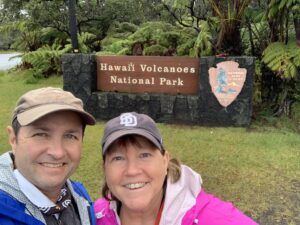 The big island of Hawaii is the youngest of the chain. It’s also the largest and hosts Hawaii Volcanoes National Park. If you are lucky and time your visit right, you’ll be able to witness an active volcano. We’ve been mostly lucky on our visits and our last one proved exceptionally lucky.
The big island of Hawaii is the youngest of the chain. It’s also the largest and hosts Hawaii Volcanoes National Park. If you are lucky and time your visit right, you’ll be able to witness an active volcano. We’ve been mostly lucky on our visits and our last one proved exceptionally lucky.
We visited Hawaii Volcanoes in March 2021 (and December 2022)
Getting There
Most flights to the big island go to Kona which is on the opposite end of the island than the National Park Visitor Center. We prefer to fly to Hilo, but that requires an interisland flight, either from Honolulu or Maui Kahului. Note that as of May 2025, the main Visitor Center is under construction for a multi-year project, but there is a temporary Welcome Center a bit further down the road.
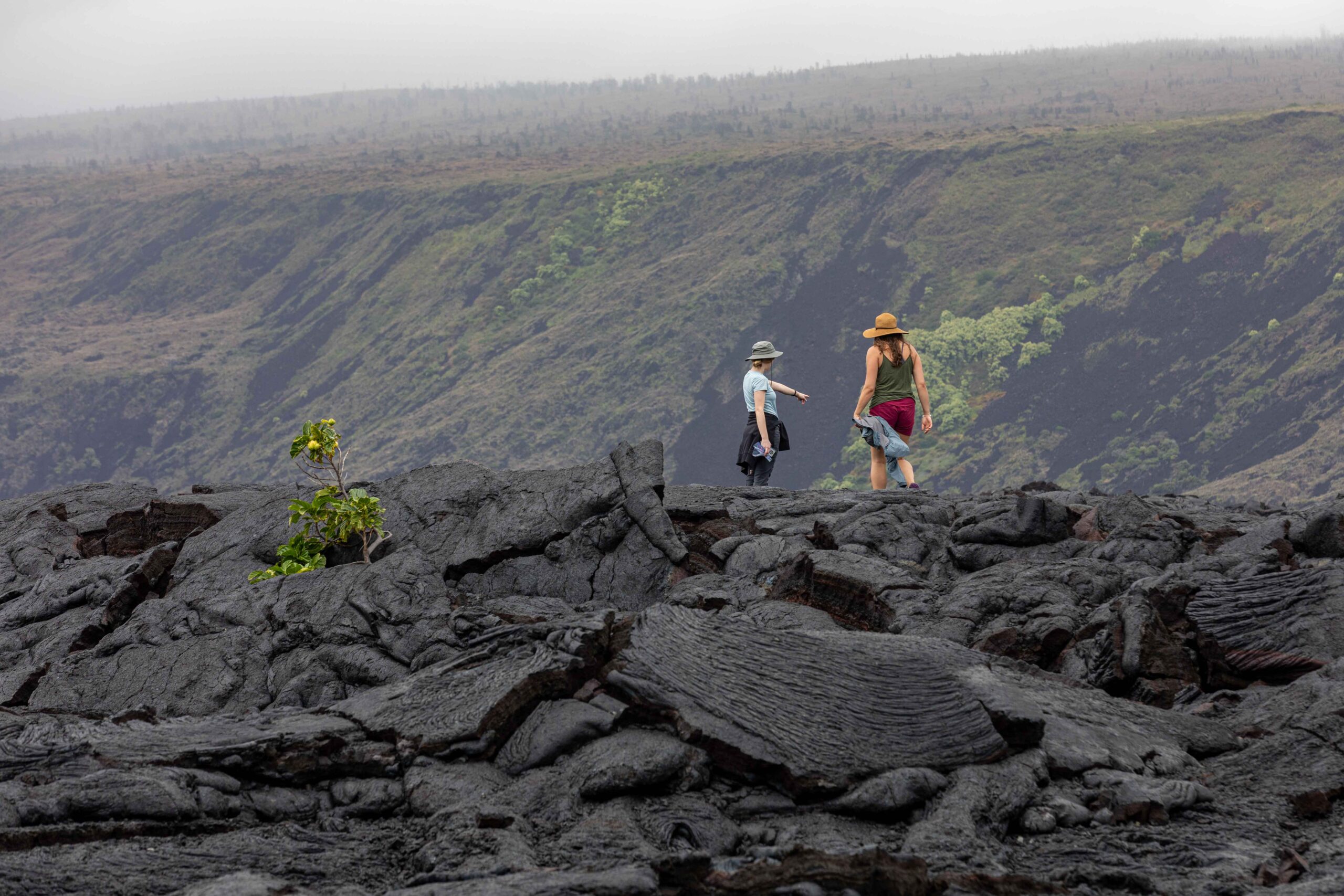
Volcano
House
There are several options for lodging depending on your plans for the island. You can stay in Kona which is on the dry side of the island (100 mile drive to NP), Hilo which is the capital (30 mile drive to the park) or near/in the park. Or you can stay right in the park, walking distance from the Visitor Center at the Volcano House. We’ve stayed there twice and while it’s pricey, it sure is convenient to take in everything the National Park has to offer. It’s pretty rustic, but we liked it a lot, and the food there is good enough. The dining room window looks out over the caldera, but the daytime view isn’t great. However, if Kiluea is erupting, the nighttime glow is really cool. Since you’ll probably have a rental car, it’s a short drive to many of the highlights in the park. Typically, the best place to go is wherever you can get a view of an eruption (along Crater Rim Trail). There are hikes that take you by past lava flows (interesting, but not really visually beautiful) such as Kiluea Iki. You can walk through the Thurston Lava tube which is neat. And maybe you’ll see some Nene birds along the way. They are protected and look kind of like a goose. We saw a few (although we saw tons on Kauai). If you’re up for a longer drive, head along Chain of Craters Road which goes all the way to the ocean where you can see the Holei Sea Arch. There’s a 1.5 mile hike you can take along Chain of Craters Road that takes you to some petroglyphs that were part of ancient native ceremonies. It can get hot out there, so take plenty of water.
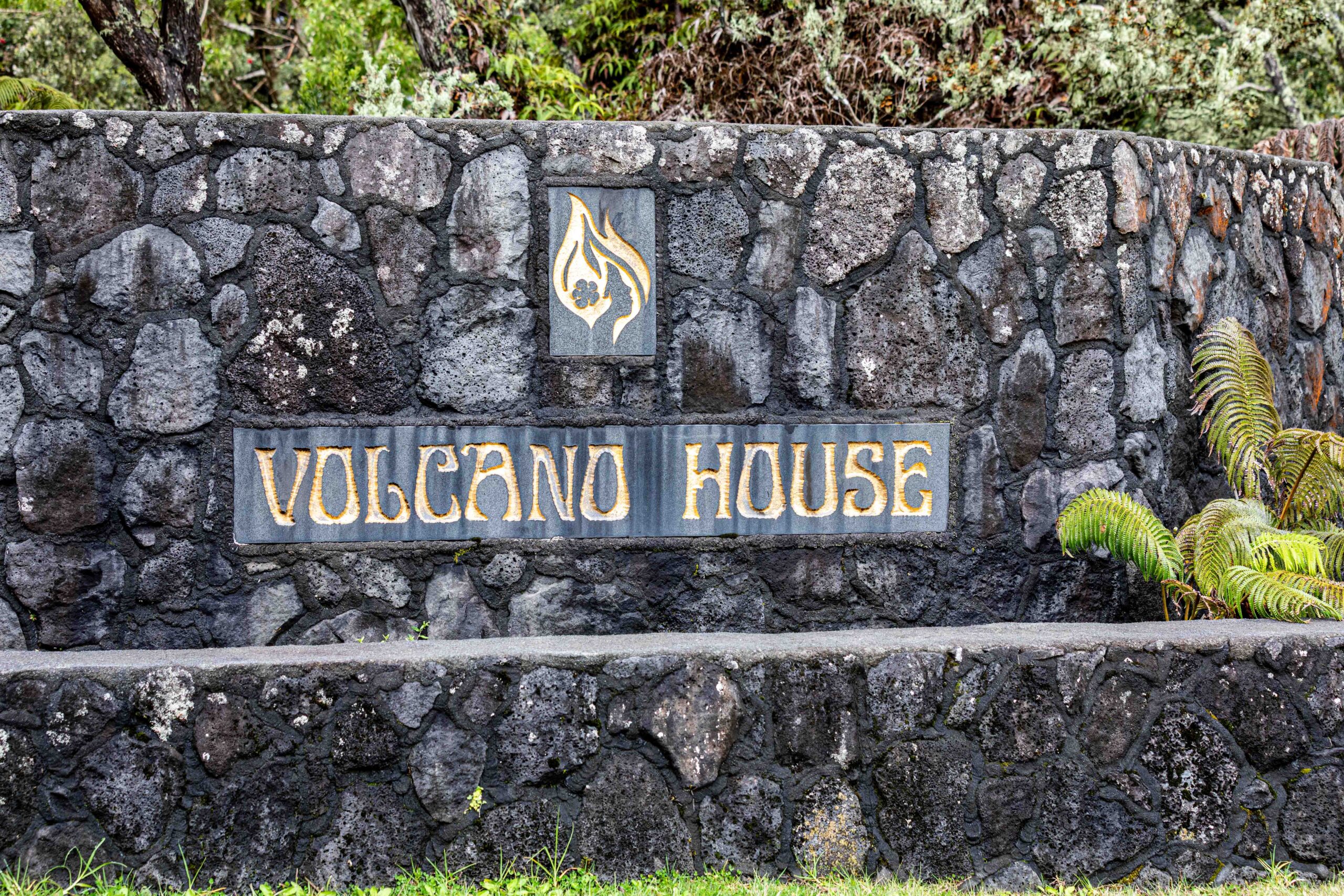
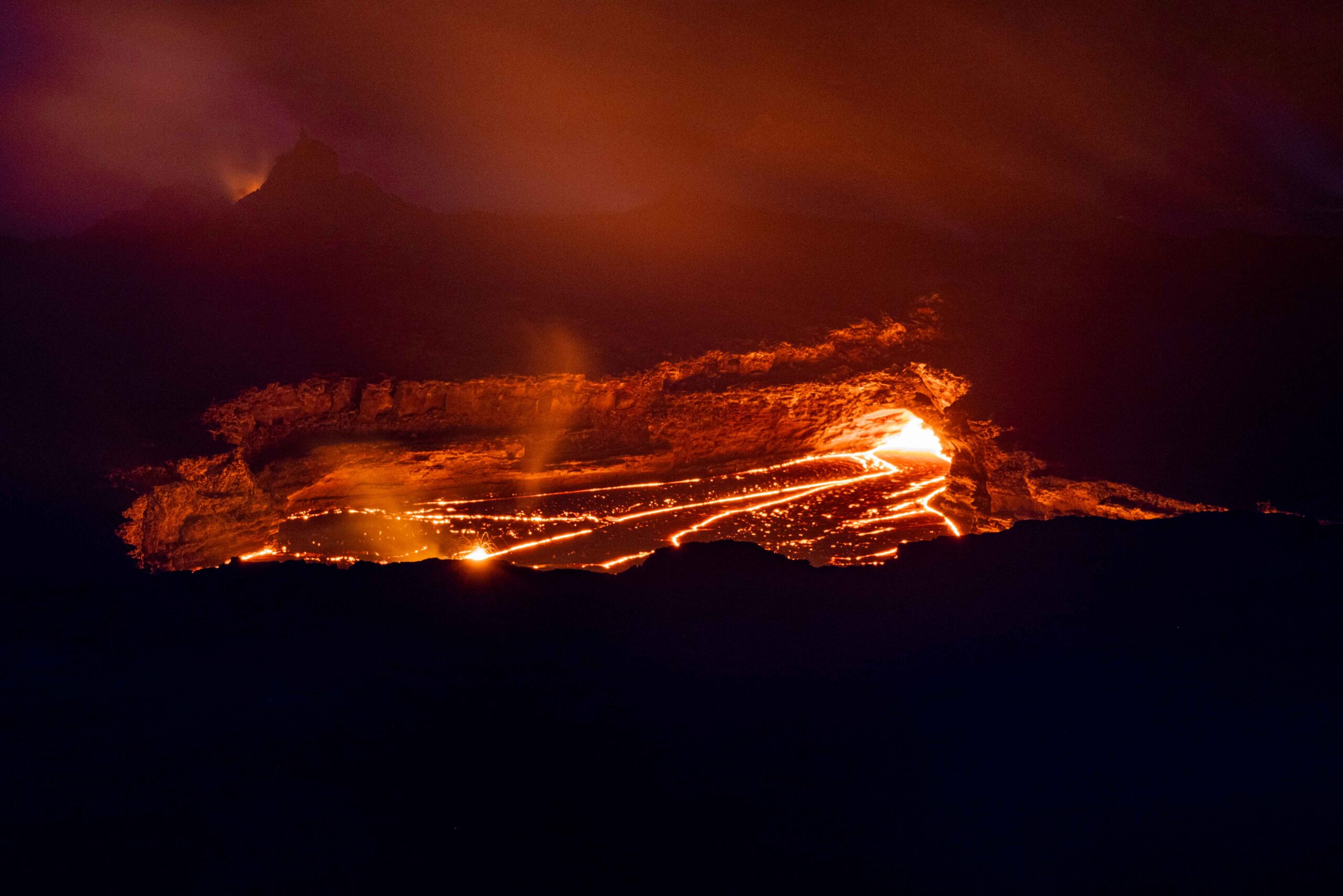
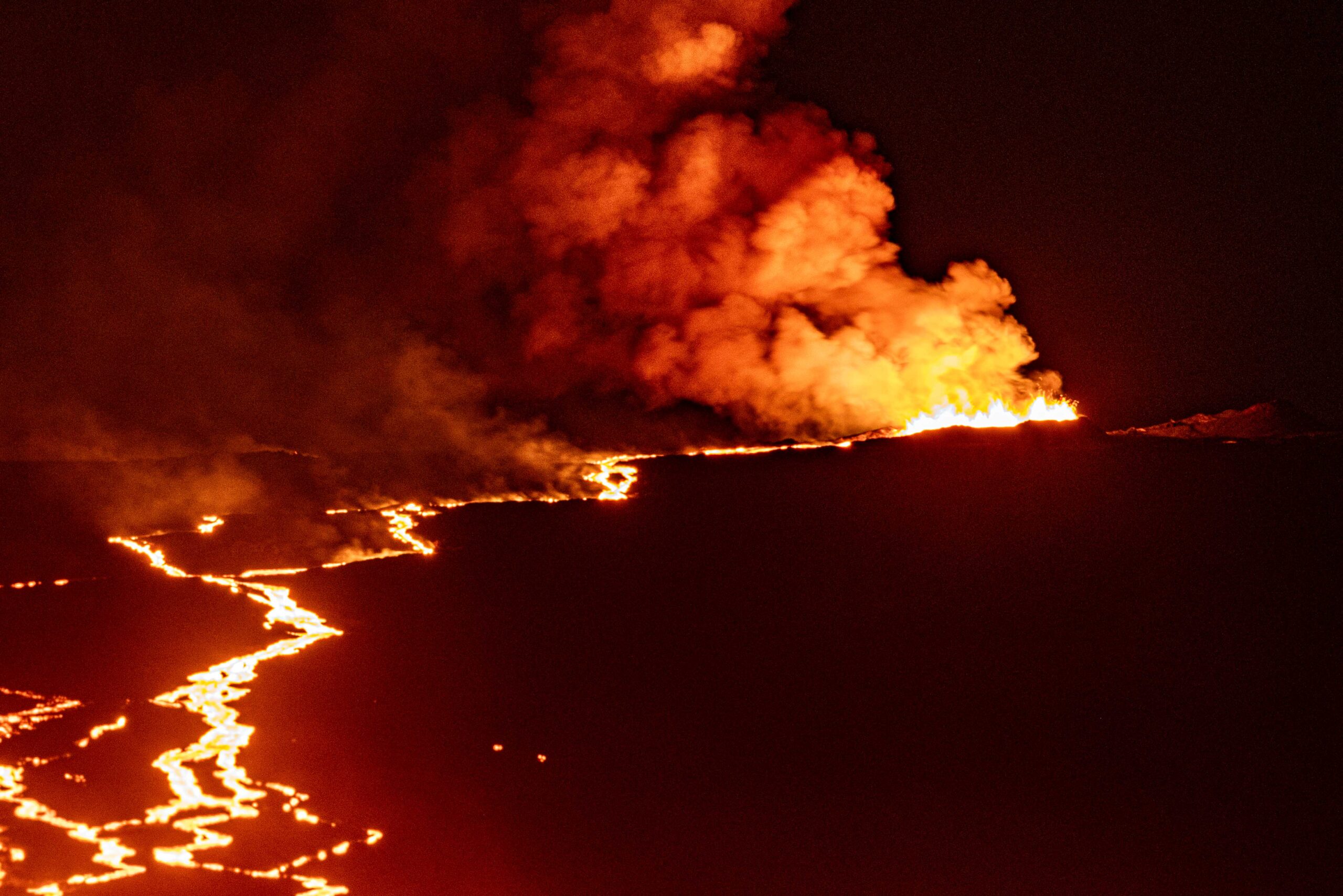
View from the Saddle Road. The eruption is ~3+ miles away, but Rainy could zoom in to see the fountains.
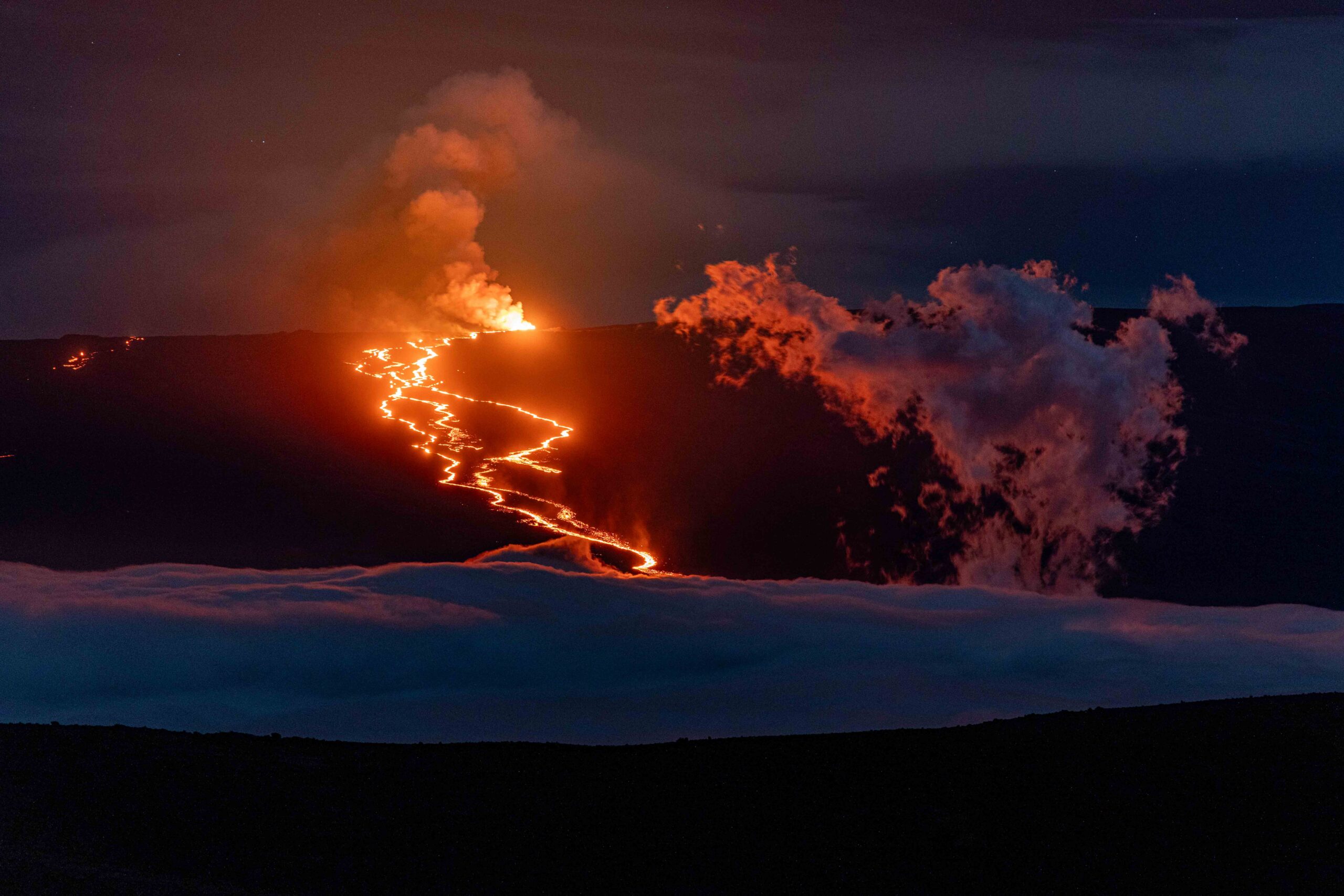
We drove up toward Mauna Kea Observatory to get this view above the clouds. Then we drank some Kava and thanked Pele. Unforgettable!
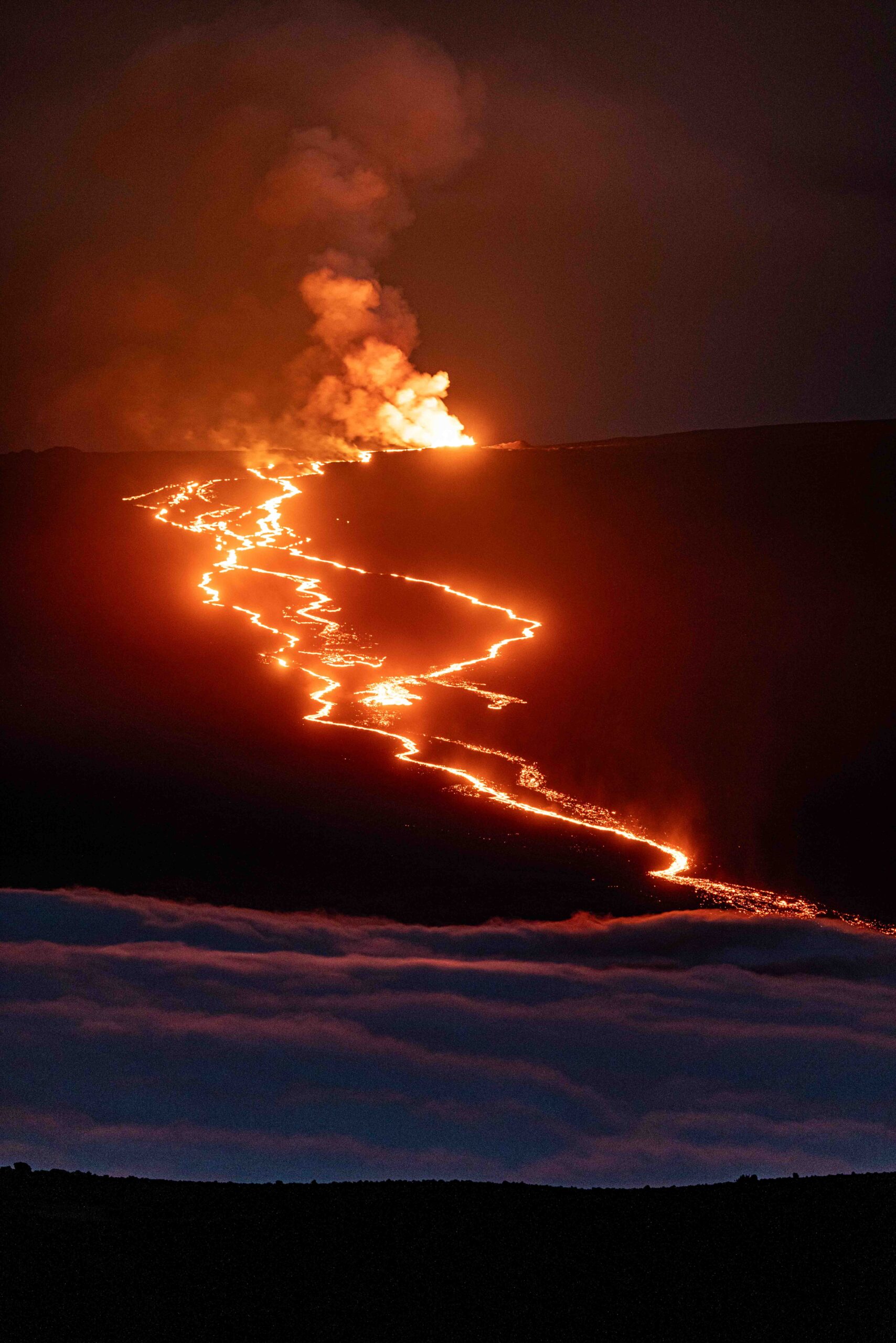
The Wonder
of Pele
On our 2021 trip, Kiluea was having a minor eruption which was fortunate, but not great for photos. In the summer of 2022, Southwest Airlines was having a sale on flights to Hawaii and Rainy wanted to see if we could get luckier with volcano photography, so we booked a flight for that December. A few days before our trip, Mauna Loa had its first major eruption in 38 years. Initially, it caused flight cancellations and we were worried that our trip would not happen. But they lifted the flight restrictions and we made the flight as planned. As our plane descended toward Hilo at night, we could see the lava fountains and flows from the air. It was spectacular, even the pilots and flight attendants were enjoying that. We picked up our rental car and instead of heading to our hotel, we headed to the Saddle Road below the eruption. There were hundreds of cars doing the same thing, but most were behaving with appropriate caution. We safely pulled to the side of the road and got to check out the eruption. The rift was several miles away (~5), but with the darkness and the gigantic size of Mauna Loa, it was quite visible, especially through Rainy’s big zoom. Even cell phones could capture great shots, but only with the zoom could you really see the fountains shooting high up into the air. Since it had been a long day, we headed to the Volcano House to check in. We spent the next two days hiking and driving around the park, mostly in the rain. Kiluea was having another minor eruption and we hiked out to get some cool photos. The night before we left, we decided to head back and try to see the Mauna Loa eruption again. This time, because of the weather, you couldn’t see anything. Not even a red glow from where we had stopped earlier in the week. It may have been fog, or it may have been vog, a kind of volcanic smog. Probably a bit of both. Anyway, the Mauna Kea Observatory sits opposite to the area of the eruption, across the Saddle Road. On a whim, we decided to head up that road to see if we could get above the clouds/vog. After a few minutes of driving up, the eruption came into view above the clouds and it was amazing! We pulled off the road and watched and chatted with the few locals who were doing the same. They asked us why we had come up there as we were the only tourists. We just said “it made sense” and they accepted us into the group. At one point when it was just us and a couple of local guys, they asked us if we’d like to join them in a ceremony to thank Pele. Pele is the Hawaiian goddess of volcanoes and fire. We shared some Kava and gave thanks to Pele for her new creation. It was quite cool. Evidently, Kava is a depressant drug and when served as a drink makes you want to take a nap. We only had a tiny bit and drove back to the hotel without issue. It was awesome and humbling to experience the eruption with the locals and Pele.
Your experience at Hawaii Volcanoes will likely vary between really good and fantastic depending on if you can experience an actual eruption. We consider ourselves lucky to have seen both extremes. If you pair your visit with a few days in Kona, you can’t go wrong. Aloha!
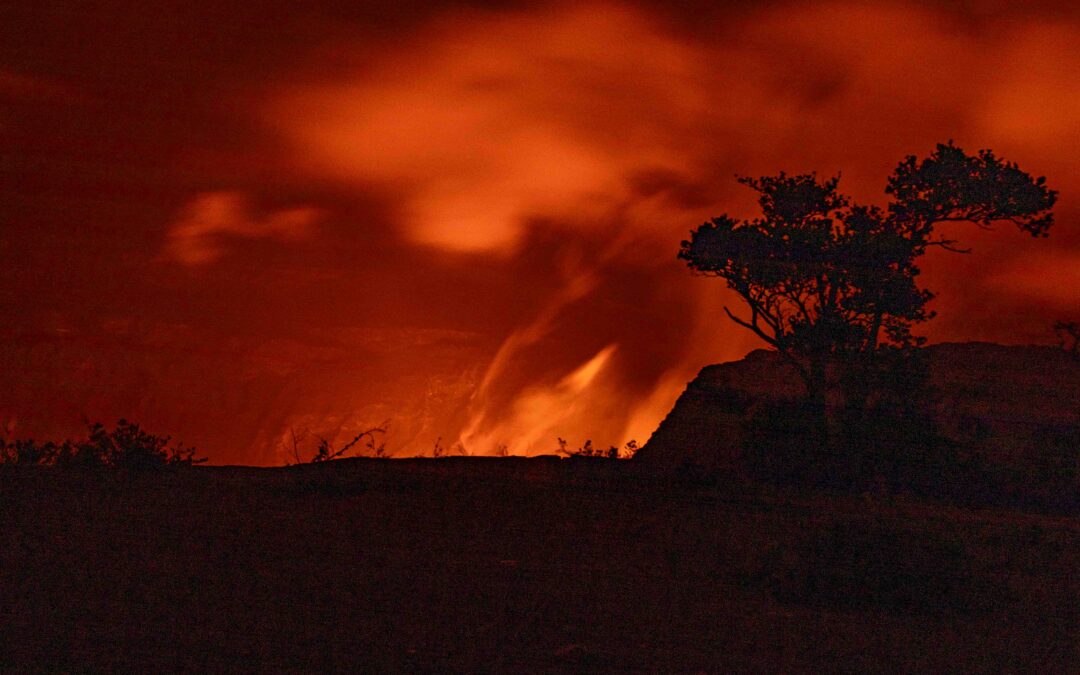
Wow, love the volcano flows! And the flowers!
Amazing photos of the eruption! Timing is everything